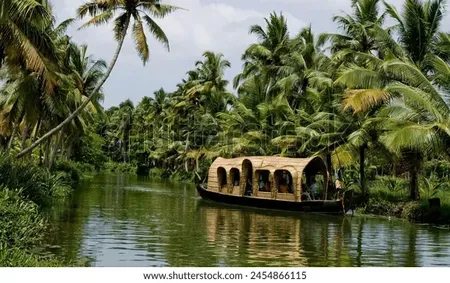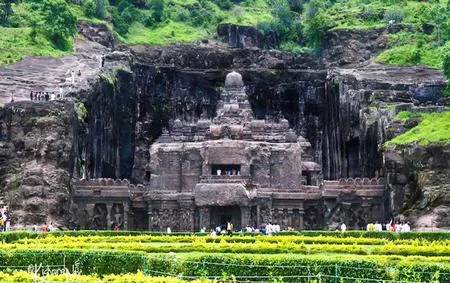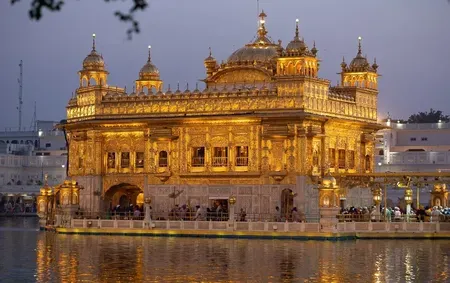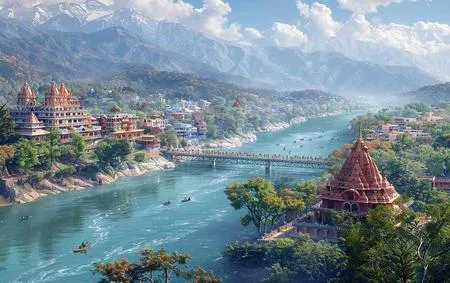The best 10 most worthwhile and most visited attractions in India
India is a land of diverse cultures, rich history, and stunning landscapes, offering a plethora of attractions for travelers. From the majestic Taj Mahal in Agra to the serene backwaters of Kerala, each destination tells a unique story. Vibrant cities like Jaipur, known as the Pink City, and the bustling streets of Mumbai also showcase the country’s dynamic blend of tradition and modernity.
India's vast expanse is dotted with UNESCO World Heritage Sites, making it a treasure trove for history enthusiasts. The Taj Mahal, an epitome of love, stands as a masterpiece of Mughal architecture, while the ancient temples of Khajuraho, adorned with intricate sculptures, depict the cultural ethos of their time. In the south, the backwaters of Kerala provide a tranquil escape, where houseboat rides reveal lush landscapes and local life. The vibrant markets of Jaipur and the spiritual atmosphere of Varanasi, where the Ganges River flows, offer contrasting experiences that embody India's cultural diversity. Nature lovers can trek in the Himalayas or explore the wildlife in national parks like Ranthambore and Bandhavgarh. Each region, with its unique traditions, cuisine, and festivals, invites travelers to immerse themselves in an unforgettable journey through this enchanting country.
 Taj MahalView All
Taj MahalView AllTaj Mahal - This stunning white marble mausoleum features intricate carvings, reflecting pools, and lush gardens, symbolizing eternal love.
 Jaipur City PalaceView All
Jaipur City PalaceView AllJaipur City Palace - A stunning blend of royal architecture, intricate frescoes, and lush gardens, showcasing a rich cultural heritage.
 Qutub MinarView All
Qutub MinarView AllQutub Minar - This UNESCO World Heritage Site features stunning architecture, intricate carvings, and serene natural surroundings, embodying rich cultural history.
 Goa BeachesView All
Goa BeachesView AllGoa Beaches - Serene landscapes, stunning architecture, rich history, and a peaceful ambiance nestled in majestic mountains await exploration.
 Varanasi GhatsView All
Varanasi GhatsView AllVaranasi Ghats - Stunning terraced steps lead to a sacred river, vibrant rituals, and a mesmerizing blend of spirituality and culture.
 Hampi RuinsView All
Hampi RuinsView AllHampi Ruins - Stunning frescoed walls, tranquil mountain setting, and rich spiritual history create a serene escape for visitors.

 View All
View AllKerala Backwaters - Serene waterways lined with lush palm trees, vibrant houseboats, and tranquil villages create a picturesque, peaceful retreat.

 View All
View AllAjanta and Ellora Caves - Stunning rock-cut architecture, intricate sculptures, and vibrant frescoes set against a serene mountain backdrop.

 View All
View AllGolden Temple - A stunning architectural marvel adorned with gold, surrounded by serene water, offering spiritual tranquility and vibrant culture.

 View All
View AllRishikesh - Nestled in stunning mountains, this UNESCO site features vibrant frescoes, serene surroundings, and a rich spiritual heritage.
The best 10 most worthwhile and most visited attractions in India
1.
Taj Mahal
Pros
Majestic white marble structure
Mughal architecture
ideal for art and history lovers
visit October to March
sunset views
nearby Agra Fort
book tickets online.
Cons
Avoid revealing clothing
refrain from visiting during peak summer heat
skip weekends for large crowds
and respect local customs and quietness during prayers.
2.
Jaipur City Palace
Pros
Stunning architecture
rich history
cultural performances
moderate crowds
best from October to March
observatory
museums
ample public transport
dress modestly
visit early for fewer tourists.
Cons
Avoid revealing clothing
don’t visit during peak summer heat
skip weekends to avoid crowds
refrain from loud behaviors
respect local customs and traditions.
3.
Qutub Minar
Pros
Stunning Indo-Islamic architecture
Rich historical significance
Family-friendly and tourists
Best visited October-March
Nearby Mehrauli Archaeological Park
Accessible via metro and rickshaws
Dress modestly.
Cons
Avoid revealing clothing
skip heavy winter wear in summer
don’t visit during peak tourist hours
refrain from loud behavior
respect local customs and traditions.
4.
Goa Beaches
Pros
Stunning sunsets
vibrant nightlife
diverse cuisine
ideal for families and couples
best from November to February
water sports
local markets
affordable taxis
respect local customs.
Cons
Avoid revealing swimsuits in local areas
don’t visit during monsoon season
skip crowded weekends
refrain from loud music
respect local customs and dress modestly.
5.
Varanasi Ghats
Pros
Ganges River views
historical temples
spiritual festivals
best visited during winter months
Ganga Aarti ceremony
local taxis and rickshaws
wear comfortable shoes and modest attire.
Cons
Avoid revealing clothing
don’t visit during monsoon
skip peak tourist seasons
avoid large noisy groups
refrain from public displays of affection
respect local customs.
6.
Hampi Ruins
Pros
Breathtaking landscapes
ancient temples
lively festivals
best October to March
Virupaksha Temple
easy bus/train access
stay hydrated
wear comfortable shoes
respect local customs.
Cons
Avoid revealing clothing
refrain from visiting during monsoon season
don’t go in large
noisy groups
and respect local customs by being quiet and respectful.
7.
Kerala Backwaters
Pros
Lush palm-fringed waterways
vibrant local markets
suitable for families and couples
best visited November to February
houseboat rides
easy access via Cochin Airport
try local cuisine.
Cons
Avoid revealing clothing
skip visits during monsoon season
don't go during peak tourist times
refrain from loud behavior
respect local customs and traditions.
8.
Ajanta and Ellora Caves
Pros
Stunning rock-cut architecture
ancient Buddhist and Hindu art
moderate crowds
best visited between October to March
UNESCO World Heritage Sites
accessible by road from Aurangabad
wear comfortable shoes.
Cons
Avoid revealing clothing
skip visits during monsoon season
don't go during peak tourist hours
refrain from loud conversations
respect local customs and traditions.
9.
Golden Temple
Pros
Golden Temple’s serene water
stunning architecture
vibrant Sikh culture
ideal for peaceful visitors
best in winter
free community meals
accessible via Amritsar transport
respectful dress advised.
Cons
Avoid shorts and sleeveless tops
don’t visit during monsoon season
steer clear of large tourist crowds
refrain from loud behavior
respect local customs and traditions.
10.
Rishikesh
Pros
Ganges River views
yoga retreats
vibrant festivals
moderate crowds in spring
pleasant weather from October to March
Ganga Aarti
easy access via bus/train
book accommodations in advance.
Cons
Avoid revealing clothing
don't visit during monsoon season
refrain from loud behavior
skip peak tourist times
respect local customs
avoid using strong fragrances.
Similar Topic You Might Be Interested In
- The best 10 most worthwhile and most visited attractions in Afghanistan
- The best 10 most worthwhile and most visited attractions in Armenia
- The best 10 most worthwhile and most visited attractions in Azerbaijan
- The best 10 most worthwhile and most visited attractions in Bahrain
- The best 10 most worthwhile and most visited attractions in Bangladesh
- The best 10 most worthwhile and most visited attractions in Bhutan
- The best 10 most worthwhile and most visited attractions in Brunei
- The best 10 most worthwhile and most visited attractions in Cambodia
- The best 10 most worthwhile and most visited attractions in China
- The best 10 most worthwhile and most visited attractions in Georgia